Latin name: Guzmania
Category: epiphytic herbaceous plants
Origin: South and Central America
Dazzling Gusmania
Guzmania is a picturesque and expressive tropical flower of the Bromeliad family, which received its beautiful name thanks to the Spanish naturalist Anastasio Guzman. There are more than 130 species of this plant, both epiphytic and terrestrial. Many of them are in demand not only among collectors, but also among passionate amateur flower growers.
Guzmania is an epiphyte that adorns tropical forests, mountain slopes of Venezuela, Brazil, the West Indies, South Florida, Central and South America. These places are considered the birthplace of this spectacular beauty, but she feels great in our home conditions. The main thing is to remember the origin of the flower and conscientiously fulfill the conditions for caring for it. The queen of the tropics prefers humid air and dim diffused light and will decorate the bathroom with pleasure.
Gusmania is distinguished by a lush bunch of long decorative, herbaceous leaves, which are of the same color or striped, depending on the type of plant. Especially irresistible are large unique red, yellow, pink, orange inflorescences-fountains that grow directly from the middle of the outlet. Wild Gusmania grow up to a meter high, and room conditions limit plant growth to 40 cm.
Gusmania species
The most popular types of Gusmania among flower growers are described below.
Gusmania reed (Guzmania Lingulata)
Gusmaniya reed photo - guzmaniyaGuzmaniya reed is especially popular. The basis is the original flat socket. It is formed by a large number (up to 30 pieces) of broad-linear, pointed, up to 40 cm long, bright green leaves. An upright, plump peduncle rises from its center, wrapped around with tiled bright leaves of pink or red color. It represents a special beauty that pleases the eye for seventeen weeks. Small white short-lived flowers form spikelet-shaped inflorescences.
Reed Gusmania has many varieties, prominent representatives are miniature Gusmania Minor Rondo, huge Tsana Gusmania, purple Gusmania, modestly colored, fiery, ordinary.
Mosaic Guzmania (Guzmania musaica)
Mosaic Gusmania photo - Guzmania A sprawling rosette of leaves up to 50 cm long attracts attention even in a non-flowering state. A straight peduncle rises from the middle of the bunch, framed by wider ellipse-shaped, sharp colorful pinkish stipules. It is headed by a capitate inflorescence of twenty yellowish-white flowers.
Nicaraguan Gusmania (Guzmania Nicaraguenci)
Guzmania Nicaraguan photo - Guzmania Lingual leaves, narrowed to the tips, form a rosette in the shape of a glass, make Nicaraguan Guzmania very attractive. The back of the leaf is covered with pale, dense texture, scales. With age, they disappear, leaving longitudinal stripes of red color. The leaves form a rosette in the form of a glass, which is decorated with a simple spindle-shaped inflorescence of yellow flowers. Flowering pleases in the spring.
Gusmania monostachia
Gusmania single-eared photo - Guzmania The rosette is organized by numerous green-yellow leaves, the lower ones are paler than the upper ones. The bare pedicel is crowned with white flowers collected in the form of a multi-row elongated spikelet.
Guzmania home care
Gusmania, like its relatives, vriesia and bilbergia, is a plant of the tropics. This should not be forgotten if you brought it into the house. It is necessary to provide warm and humid air, diffused light, a suitable temperature and the plant will thank you with flowering. Let's get acquainted with the secrets of care.
Temperature regime
The heat-loving Gusmania will suit the air temperature in winter up to 18˚С, and in summer up to 25˚С, preferably without sudden changes.
Lighting
Bright diffused light of non-directional action.
Half shade won't hurt. Western and eastern windows are a suitable option for a plant.
Humidity and watering
The recommended air humidity is within 60%. Spraying with warm soft water is desirable. You can pour some water into the outlet.
In spring and summer, water abundantly with soft warm water, keeping the soil moist. In cold weather, the frequency of watering is reduced, allowing the earth to dry out a little.
The soil
A well-drained mixture of sand, peat and leafy humus in equal amounts, with the addition of sphagnum, is suitable for Gusmania.
Fertilizer
In the warm period, once every fifteen days we feed the plant with soluble fertilizers, diluted by half.
Gusmania reproduction and transplantation
The plant needs to be propagated by piding the bush into parts or by baby shoots that have reached the size of half an adult. In any case, you need to leave the maximum number of roots.
Gusmania is transplanted in the spring if necessary: after flowering, the purchased plant must be transplanted into a larger flowerpot without deepening the outlet. Further transplants are carried out after the separation of the children.
Gusmania pests and diseases
- Regular inspection of the plant can prevent unforeseen diseases.
- With excessive watering, gray spots may appear on the leaves of guzmania, which signal an infection with parasitic fungi.
- When the air is too dry, the main pests are spider mites, mealybugs and scale insects.
- Immediately treat the plant with soapy water. If necessary - insecticides.
Difficult moments when growing Gusmania
- Lack of Light: Gusmania needs bright but diffused light! Lack of light can lead to leaf loss and stretched stems.
- Waterlogged Soil: Gusmania does not tolerate root flooding, so it is important to maintain a moderately moist soil that does not dry out or become waterlogged.
- Temperature fluctuations: Gusmania needs a constant air temperature and does not tolerate sudden changes. Do not place the plant next to an air conditioner or close to heating appliances.
- Poor water quality: Gusmania is very sensitive to the quality of the water used to water the plant. Use only filtered or distilled water.
- Pest Infestation: Gusmania can become prey for insects and other pests, so keep an eye on the health of the plant and take pest control measures if necessary.
- Improper fertilization: Gusmania needs regular fertilization, but improper dosing or the wrong fertilizer formulation can harm the plant.
- Repotting: Gusmania can be sensitive to repotting, so it should be done only as needed, using fresh, nutritious soil and carefully working on the roots.




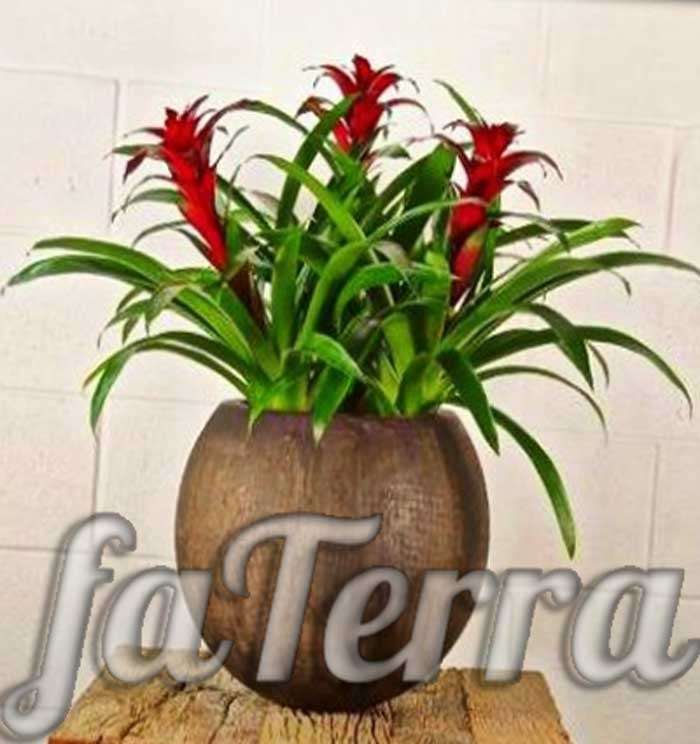










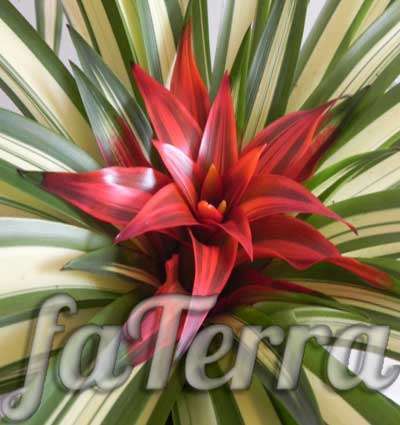
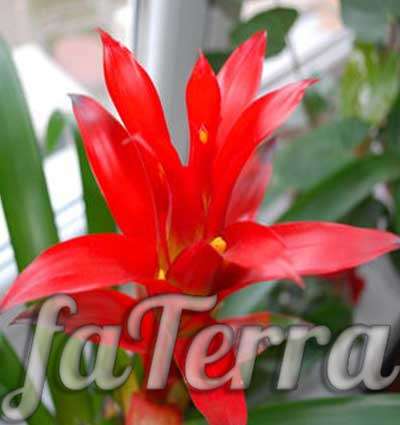
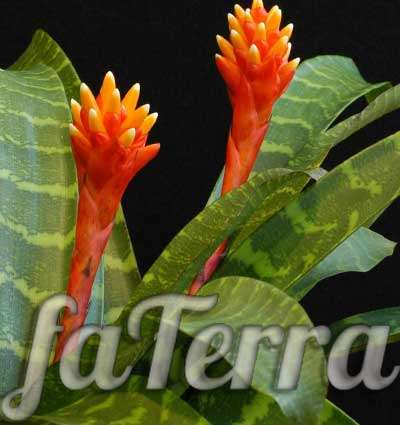
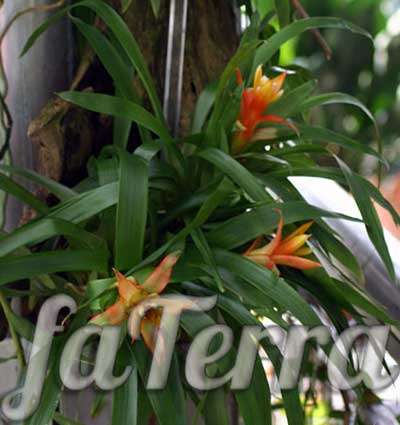
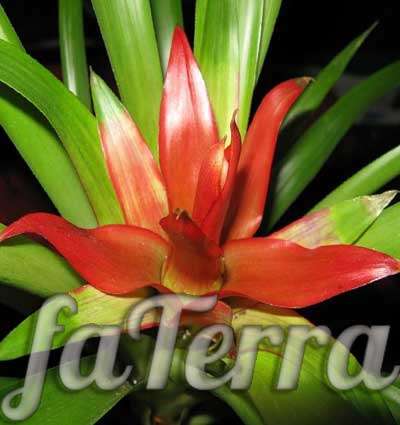
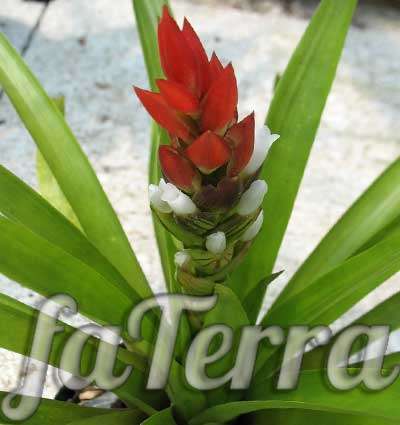

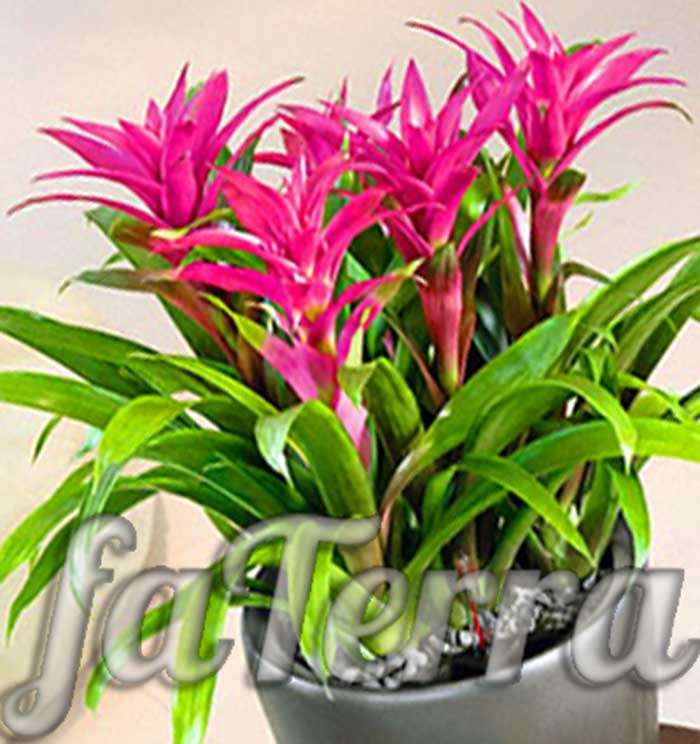
Write comments
Comments